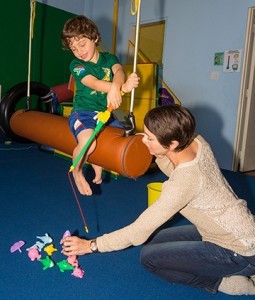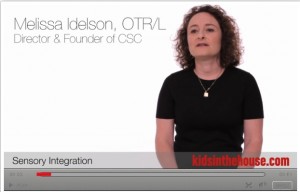What is a Sensory Diet?
Sensory Diet – Ways an OT (Occupational Therapist) works with Children and Families to Support Regulation
What really is a sensory diet?
Many occupational therapists use the term, “sensory diet”, when working with children with developmental and/or learning challenges. The term sensory diet was coined by Patricia Wilbarger, M.Ed., FAOTA, OTR in 1984 to indicate the use of a combination of sensory strategies to keep a person at the optimal level of arousal. All human beings unconsciously use sensory diets every day. We exercise, drink coffee, listen to music, retreat to a quiet space when the world gets overwhelming, chew/crunch and eat foods that often make us happy.
Self-regulation is something everyone continually works on, whether we are cognizant of it or not.

Children who are struggling with self-regulation and utilizing the “just right” behaviors that are expected in different environments do not have the mindfulness, resources or control to seek out the activities that may help them shift from the Red Zone (mad, angry) or the Yellow Zone (silly, out of control, anxious) to the Green Zone (ready to listen and learn). Learn more about the Zones of Regulation.
“Sensory modulation” is a therapeutic term used to describe one’s ability to respond appropriately to sensory input and to stay focused on the activity at hand. It may be used with regard to children and adults who may be under- responsive, sensory seeking and or over responsive. It is never black and white. Working with an occupational therapist will help parents and teachers get a better understanding of the why, what and how of “sensory modulation”. The OT will help parents understand the behaviors of a child, help to identify and remove triggers from their environment and better equip the child’s nervous system to cope with the highly sensory world we live in.
An occupational therapist that has spent time assessing a child’s responses to various sensory information, known as “sensory processing/integration” , will design a sensory diet tailored to that child’s needs. This “diet” will include the tools required, (deep pressure, hugging, taking a break, belly breathing, drinking water, wall pushes) and a schedule outlining when to use them, that will support a child’s overall regulatory state and therefore ability to engage in relationships and his/her environment in a successful way.
Additional Resources for Sensory Processing Disorder and Sensory Integration

